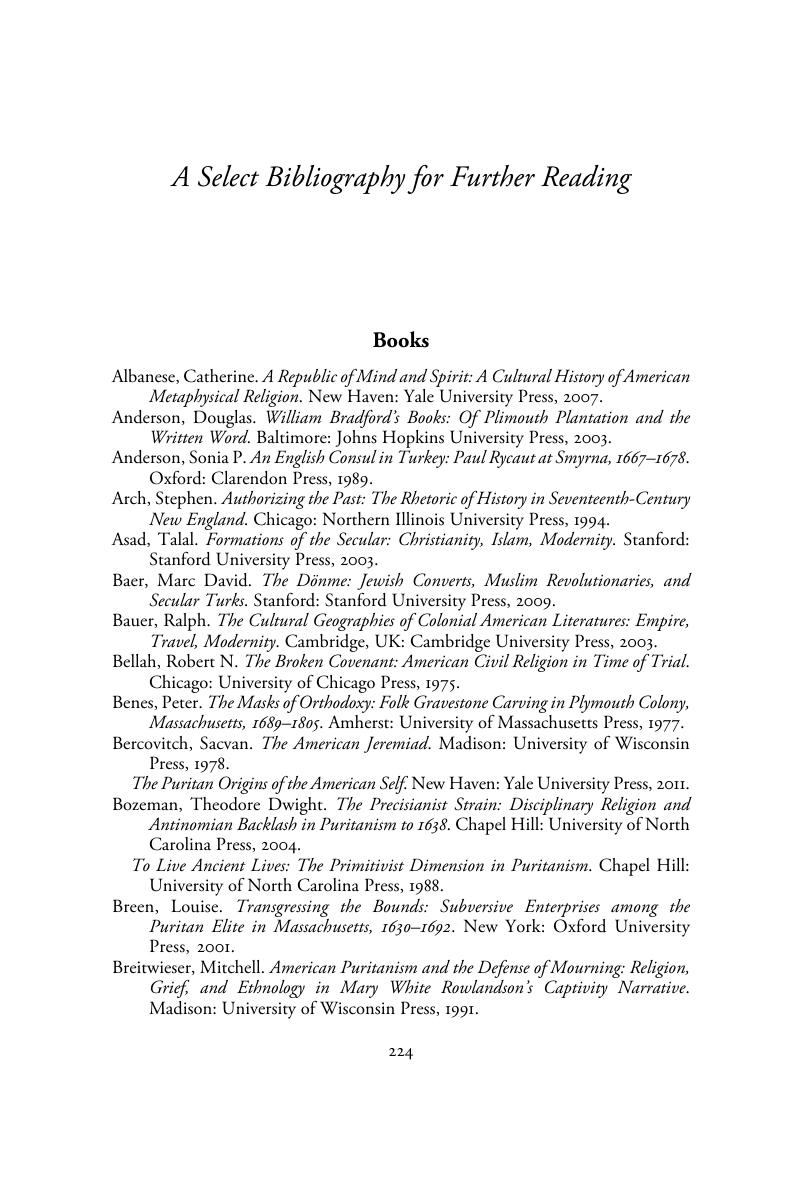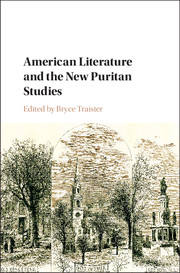Book contents
- American Literature and the New Puritan Studies
- American Literature and the New Puritan Studies
- Copyright page
- Contents
- Illustrations
- Contributors
- Acknowledgments
- Chapter 1 Introduction: The New Puritan Studies
- Part I Unexpected Puritans
- Part II Puritanism’s Others
- Part III Puritan Afterlives
- A Select Bibliography for Further Reading
- Index
- References
A Select Bibliography for Further Reading
Published online by Cambridge University Press: 01 September 2017
- American Literature and the New Puritan Studies
- American Literature and the New Puritan Studies
- Copyright page
- Contents
- Illustrations
- Contributors
- Acknowledgments
- Chapter 1 Introduction: The New Puritan Studies
- Part I Unexpected Puritans
- Part II Puritanism’s Others
- Part III Puritan Afterlives
- A Select Bibliography for Further Reading
- Index
- References
Summary

- Type
- Chapter
- Information
- American Literature and the New Puritan Studies , pp. 224 - 234Publisher: Cambridge University PressPrint publication year: 2017



